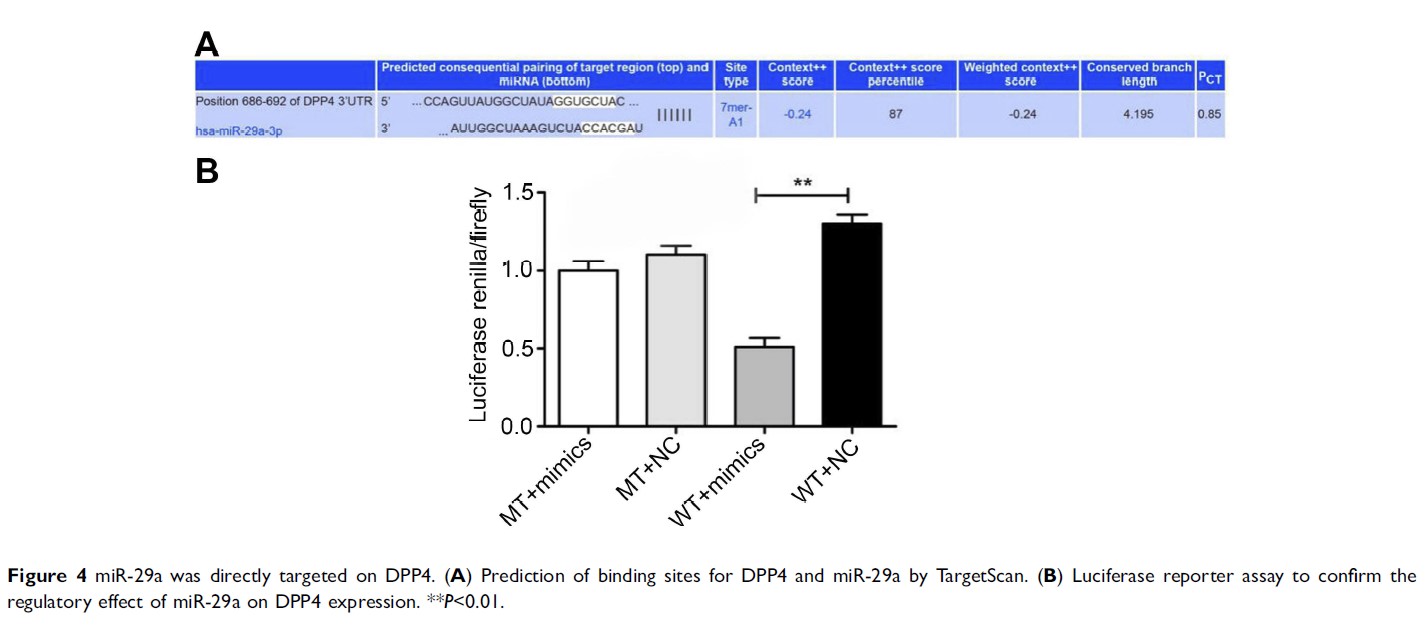9 0 8 0 2
论文已发表
注册即可获取德孚的最新动态
IF 收录期刊
- 2.6 Breast Cancer (Dove Med Press)
- 3.9 Clin Epidemiol
- 3.3 Cancer Manag Res
- 3.9 Infect Drug Resist
- 3.6 Clin Interv Aging
- 4.8 Drug Des Dev Ther
- 2.8 Int J Chronic Obstr
- 8.0 Int J Nanomed
- 2.3 Int J Women's Health
- 3.2 Neuropsych Dis Treat
- 4.0 OncoTargets Ther
- 2.2 Patient Prefer Adher
- 2.8 Ther Clin Risk Manag
- 2.7 J Pain Res
- 3.3 Diabet Metab Synd Ob
- 4.3 Psychol Res Behav Ma
- 3.4 Nat Sci Sleep
- 1.9 Pharmgenomics Pers Med
- 3.5 Risk Manag Healthc Policy
- 4.5 J Inflamm Res
- 2.3 Int J Gen Med
- 4.1 J Hepatocell Carcinoma
- 3.2 J Asthma Allergy
- 2.3 Clin Cosmet Investig Dermatol
- 3.3 J Multidiscip Healthc

miR-29a 通过靶向 DPP4 抑制乳头状甲状腺癌的增殖、侵袭和迁移
Authors Wang Y, Han J, Lv Y, Zhang G
Received 14 January 2019
Accepted for publication 15 April 2019
Published 28 May 2019 Volume 2019:12 Pages 4225—4233
DOI https://doi.org/10.2147/OTT.S201532
Checked for plagiarism Yes
Review by Single-blind
Peer reviewers approved by Dr Jyoti Bajaj
Peer reviewer comments 2
Editor who approved publication: Dr Federico Perche
Purpose: The
purpose of this study was to investigate the effects of miR-29a on papillary
thyroid cancer (PTC) and its underlying mechanisms.
Methods: Primary
tumor tissues and adjacent tissues of 69 patients with PTC were obtained. Human
thyroid cell line Nthy-ori3-1 and PTC cell lines K1, BCPAP, TPC-1 were
cultured. K1 cells were transfected and divided into following groups: blank
group (without any treatment), miR-29a mimics group, control mimics group,
miR-29a inhibitor group, control inhibitor group, DPP4 siRNA group, control
siRNA group and miR-29a inhibitor + DPP4 siRNA group. qRT-PCR and Western blot
were used to detect miR-29a and DPP4 expression.
3-(4,5-dimethylthiazol-2-yl)-2,5-diphenyltetrazolium bromide (MTT) and
transwell assay were performed to detect cells proliferation, migration, and
invasion. A nude mice xenograft experiment was performed.
Results: miR-29a
was significantly downregulated in PTC tissues, K1 and TPC-1 cells (P <0.01). DPP4
was significantly upregulated in the miR-29a inhibitor group and significantly
downregulated in the miR-29a mimics group (P <0.01). DPP4 was the target gene of miR-29a.
miR-29a significantly inhibited K1 cell proliferation, invasion, migration and
PTC growth in nude mice by targeting DPP4 (P <0.01).
Conclusion: miR-29a
inhibits proliferation, migration, and invasion of PTC by targeting DPP4, which
might provide a new target for clinical treatment of PTC.
Keywords: PTC,
miR-29a, DPP4, proliferation, migration
